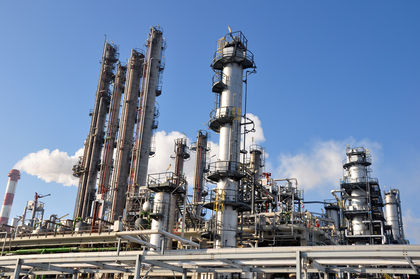Austria - Industry

Industrial output has increased vastly since the beginning of World War II and contributed 33% of the GDP (including mining) in 2002. In 1946, the federal parliament nationalized basic industries. Major parts of the electric and electronics, chemical, iron and steel, and machinery industries remained state controlled until the 1990s, when the Austrian government embarked upon a privatization program. As of 2002, the steel, aluminum, and petroleum industries were majority-owned by private shareholders. Other privatizations taking place were the Austrian tobacco company, the Vienna airport company, and Telekom Austria.
Iron and steel production, greatly expanded its output after 1937. In 1992, production of crude steel reached 3,953,107 tons, while rolled steel amounted to 3,435,180. A total of 155,403 automobiles were manufactured in 2001 and 24,988 heavy trucks were produced in 2000.
The most important sectors of the textile industry are embroidery, spinning, weaving, and knitting. The value of textile production in 1992 was S 33,097 million. Some 19,241 tons of cotton yarn were produced in 1992.
The chemical industry, which was relatively unimportant before World War II, now ranks third in value of production. In 1992, it produced 182,595 tons of fertilizers, 115,050 tons of rubber and asbestos products, 105,379 tons of paints and coating compounds, 178,035 tons of soaps and scouring agents, and more than S 12 billion worth of pharmaceuticals. Petroleum refinery products (in tons) included fuel oil, 1,821,275; diesel oil, 3,242,282; gasoline, 2,458,365; and kerosene, 391,334.
Other leading industries, in terms of production value and employment, are electrical and electronic machinery and equipment, pulp and paper, ceramics, and especially foodstuffs and allied products. Austria has always been famous for its skilled craftsmen, such as glassblowers, goldsmiths, jewelers, lacemakers, potters, stonecutters, and wood-carvers.
The country is taking steps to change its image from one in which traditional "rust belt" industries such as steel and heavy engineering dominate. In 2003, the electronics, biotechnology, and medical and pharmaceutical sectors held potential for high growth. Investment in the construction industry increased, especially after the severe flooding of August 2002.
Comment about this article, ask questions, or add new information about this topic: